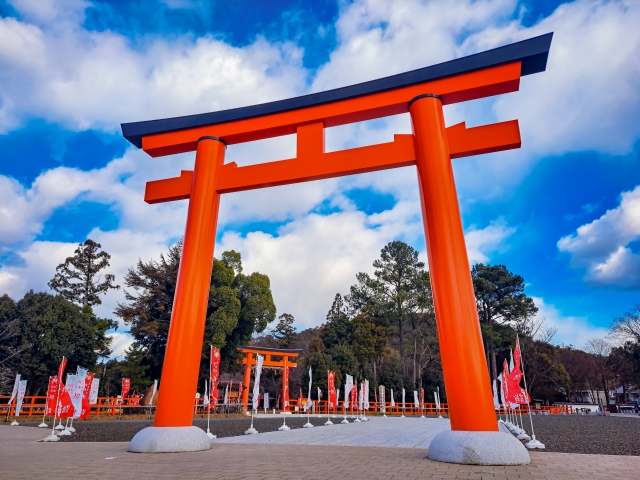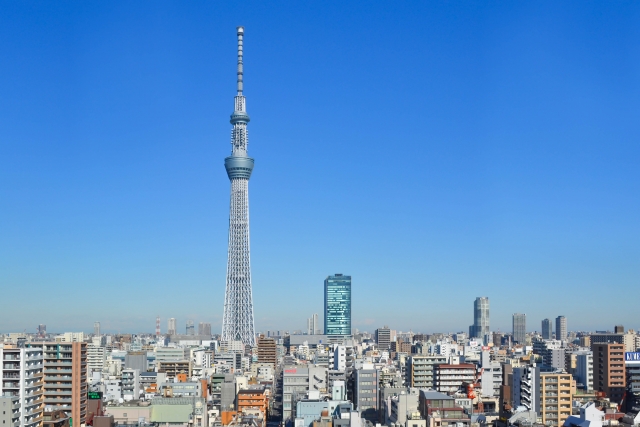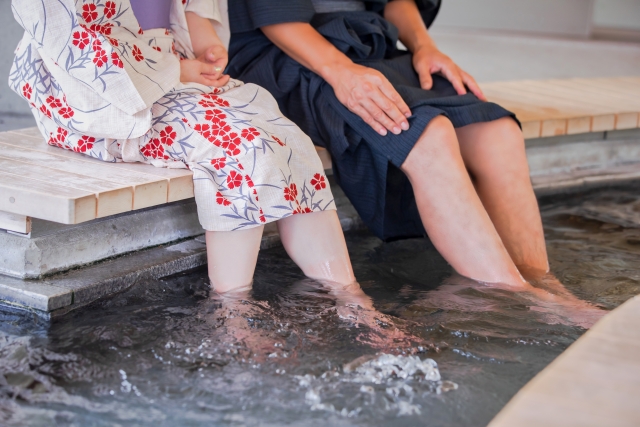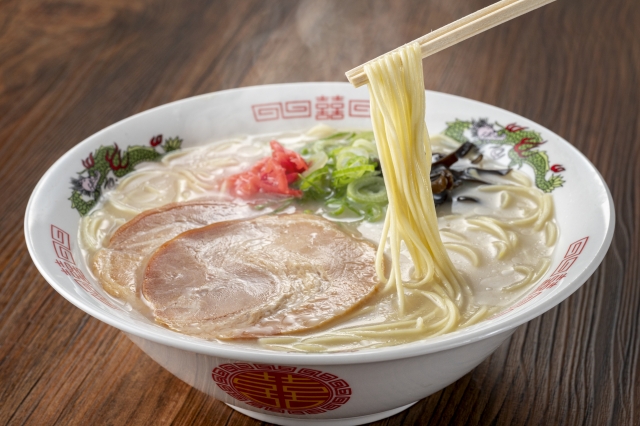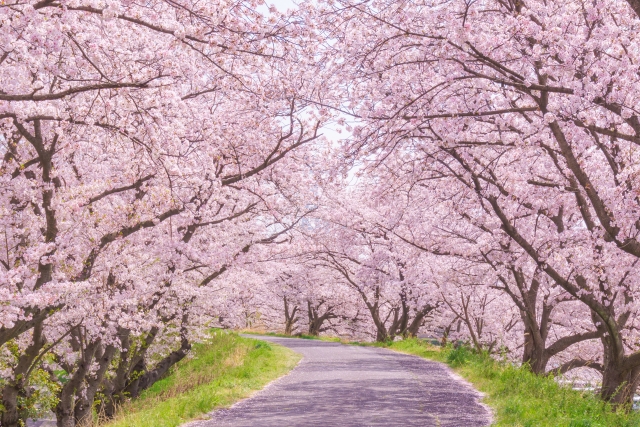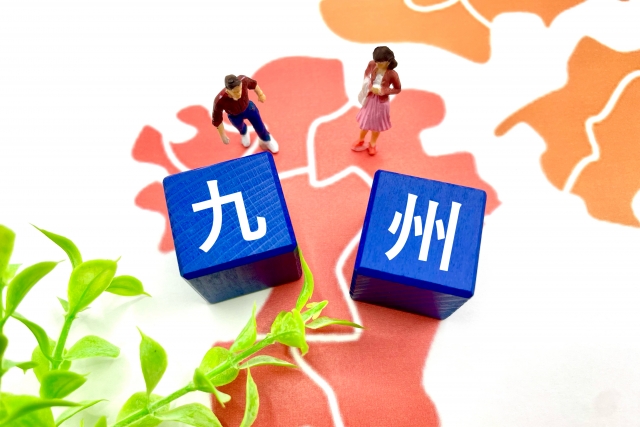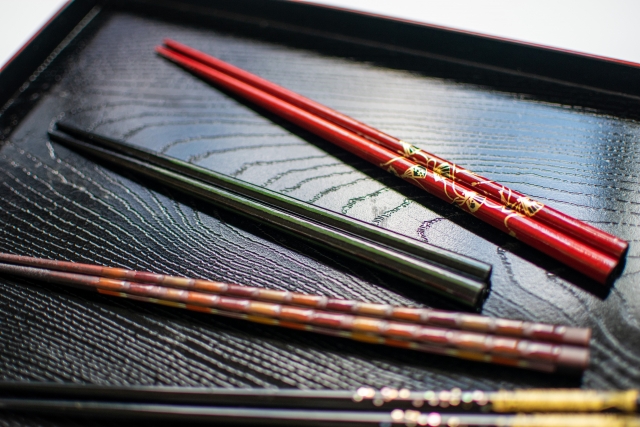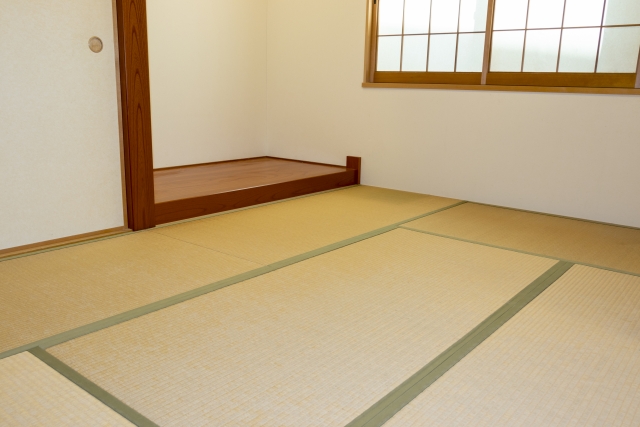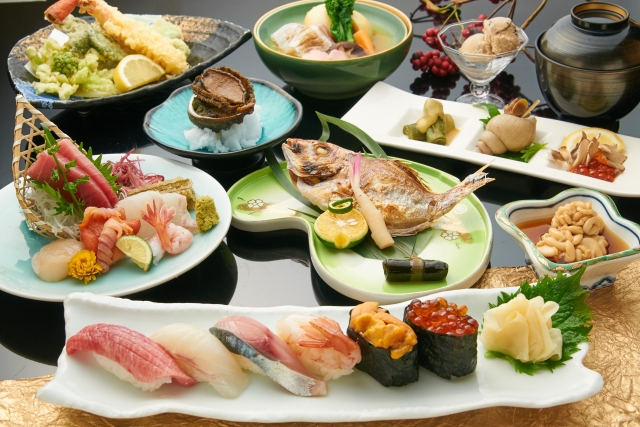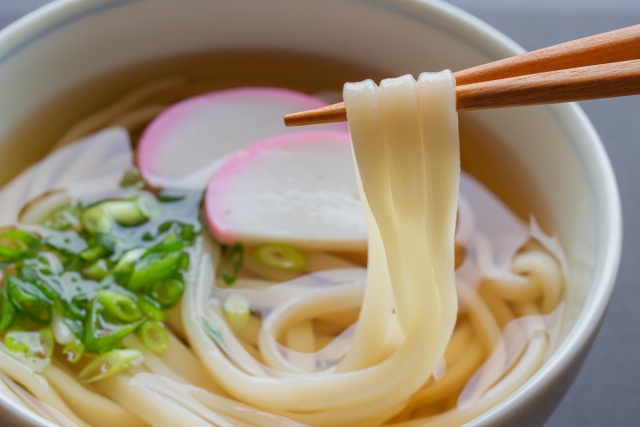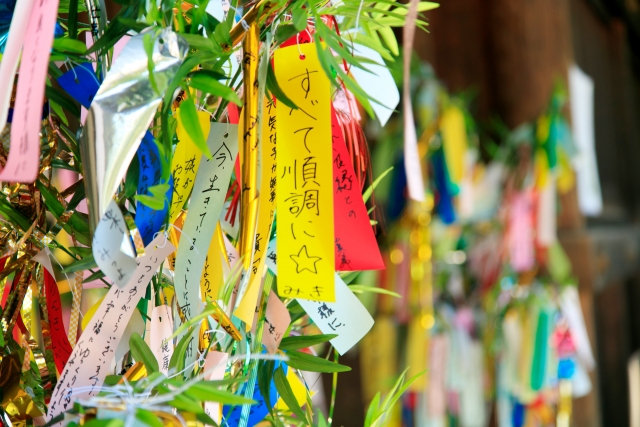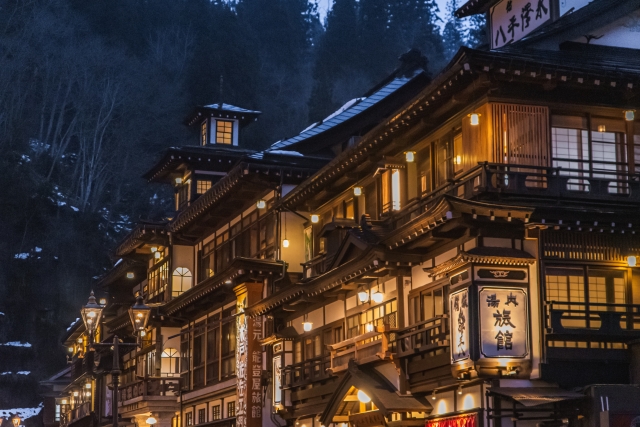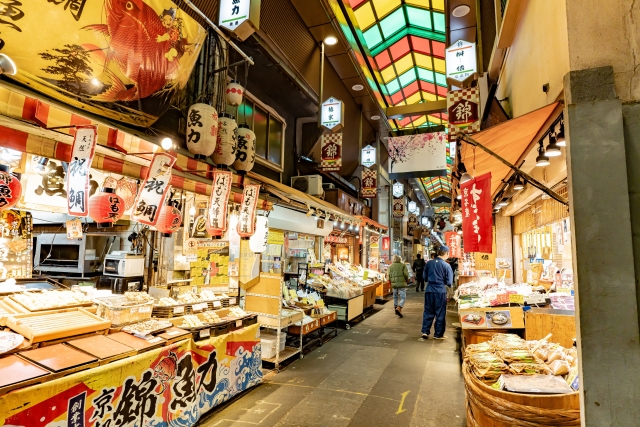When we visit a shrine, the first thing we see is the Torii gate. The Torii is a large gate-like structure that represents the entrance of the shrine and symbolizes the holiness of the shrine. A torii is built at the border between the inside and outside of a shrine, and the area inside the torii is revered as the sacred space where God resides. In addition, some shrines that do not have a specific main shrine building, but instead enshrine natural objects such as mountains or rocks as their sacred body, have a torii gate in front of it, which is considered important as a symbol of God’s presence. Torii are generally considered to be symbolic of shrines, but they can also be found in some Buddhist temples. The stone torii gate of Shitennoji Temple, Japan’s first official temple, located in Tennoji Ward, Osaka City, is the oldest existing stone torii gate and is registered as an Important Cultural Property of Japan, and is one of the three major torii gates in Japan along with the Otorii Gate of Itsukushima Shrine (Hiroshima Prefecture) and the copper Torii Gate of Kinpusenji Temple (Nara Prefecture).
 The torii is a structure at the entrance of a shrine, and is a “boundary” that separates the world of the gods from the world of humans. In addition, it is believed to be a “boundary” that prevents unclean things from entering the shrine.
In other words, the Torii is the gate to the sacred area, and the inside of the Torii is the sacred area of God. For this reason, it is the custom to bow before passing through the torii, and to turn around and bow when leaving the shrine. The middle of the path to the shrine is called “Seichu” and is said to be the path of the gods. When visiting a shrine, it is good manners to move to the left or right and walk along the edge of the path, avoiding the “seichu”. When you arrive in front of the main shrine building, stand in the center and pray from the front.
Generally, there is only one torii gate in a shrine, but some larger shrines have multiple torii gates. The torii standing furthest away from the main shrine is called the “first torii,” followed by the “second torii” and the “third torii” until you reach the main shrine. Torii are counted as “ikki”, “niki”, “sanki”in Japanese.
The torii is a structure at the entrance of a shrine, and is a “boundary” that separates the world of the gods from the world of humans. In addition, it is believed to be a “boundary” that prevents unclean things from entering the shrine.
In other words, the Torii is the gate to the sacred area, and the inside of the Torii is the sacred area of God. For this reason, it is the custom to bow before passing through the torii, and to turn around and bow when leaving the shrine. The middle of the path to the shrine is called “Seichu” and is said to be the path of the gods. When visiting a shrine, it is good manners to move to the left or right and walk along the edge of the path, avoiding the “seichu”. When you arrive in front of the main shrine building, stand in the center and pray from the front.
Generally, there is only one torii gate in a shrine, but some larger shrines have multiple torii gates. The torii standing furthest away from the main shrine is called the “first torii,” followed by the “second torii” and the “third torii” until you reach the main shrine. Torii are counted as “ikki”, “niki”, “sanki”in Japanese.
 Shinmei Torii is the oldest type of torii, and can be seen at places such as Ise Shrine, where Amaterasu-omikami is enshrined, and is made by placing a straight piece of wood on top of two pillars, with another piece of wood between the pillars for added strength. It is characterized by its very simple shape, and the upper rail, lower rail, and pillars are often circular.
Shinmei Torii is the oldest type of torii, and can be seen at places such as Ise Shrine, where Amaterasu-omikami is enshrined, and is made by placing a straight piece of wood on top of two pillars, with another piece of wood between the pillars for added strength. It is characterized by its very simple shape, and the upper rail, lower rail, and pillars are often circular.
 The Myojin Torii is characterized by a horizontal pillar resting on two pillars, both ends of which are bent upward. This shape is found in many shrines throughout Japan, including Inari Shrine, and accounts for more than 90% of all torii in Japan. It is believed that the torii of Hachimangu Shrine was also created by a change from the Myojin Torii. There are various forms of torii, including the orthodox one like the Meiji Shrine, the Miwa Torii with three torii lined up horizontally, and the Sanno Torii with a triangular roof on top of the upper rail.
The origins and forms of the torii are various, and each shrine has its own form, but it has become a common concept among Japanese people to feel sacred when they see a torii.
The Myojin Torii is characterized by a horizontal pillar resting on two pillars, both ends of which are bent upward. This shape is found in many shrines throughout Japan, including Inari Shrine, and accounts for more than 90% of all torii in Japan. It is believed that the torii of Hachimangu Shrine was also created by a change from the Myojin Torii. There are various forms of torii, including the orthodox one like the Meiji Shrine, the Miwa Torii with three torii lined up horizontally, and the Sanno Torii with a triangular roof on top of the upper rail.
The origins and forms of the torii are various, and each shrine has its own form, but it has become a common concept among Japanese people to feel sacred when they see a torii.
 Torii gates at shrines are very familiar to Japanese people, but actually their origin is not clearly known. The most famous story is that of Amaterasu Omikami, who appears in the Kojiki (Records of Ancient Matters).
Torii gates at shrines are very familiar to Japanese people, but actually their origin is not clearly known. The most famous story is that of Amaterasu Omikami, who appears in the Kojiki (Records of Ancient Matters).
 Fushimi Inari-Taisha shrine in Kyoto City is the head shrine of the 30,000 Inari Shrines that are said to exist throughout Japan. It is said to be one of the strongest spiritual power spots in the country for increasing your luck in money and career, and is also very popular among foreign tourists. Fushimi Inari-taisha is known for its “”Senbon Torii”” (thousand torii gates), which is not actually “”a thousand”” gates, but is named after the large number of gates. In addition to the Senbon Torii, there are many other torii dedicated to the shrine, and in total, there are over 10,000 torii in various sizes at Fushimi Inari Taisha.
Fushimi Inari-Taisha shrine in Kyoto City is the head shrine of the 30,000 Inari Shrines that are said to exist throughout Japan. It is said to be one of the strongest spiritual power spots in the country for increasing your luck in money and career, and is also very popular among foreign tourists. Fushimi Inari-taisha is known for its “”Senbon Torii”” (thousand torii gates), which is not actually “”a thousand”” gates, but is named after the large number of gates. In addition to the Senbon Torii, there are many other torii dedicated to the shrine, and in total, there are over 10,000 torii in various sizes at Fushimi Inari Taisha.
 One of the most famous underwater torii gates is the Otorii Gate of Itsukushima Shrine, which is also designated as a World Heritage Site. The Otorii is a symbol of Miyajima, and is one of the three most beautiful scenic spots in Japan.
It can be seen floating in the sea during high tide, when the depth of the seawater (tide level) is more than 250cm. On the other hand, during low tide, the sea water drops to less than 100 cm, so you can walk to the torii gate.
The tide rises and falls twice a day, with the first high tide occurring between around 9:00 and 11:00. The first low tide is usually around dawn or early morning, and the second low tide is about 12 hours later in the evening. However, the cycle of low tides shifts by several tens of minutes every other day, so it varies greatly depending on the season and the day.
*The Otorii of Itsukushima Shrine has been undergoing extensive repair work to preserve it since it was built over 140 years ago. The completion date has not yet been determined, but it is expected to take another two to three years.
One of the most famous underwater torii gates is the Otorii Gate of Itsukushima Shrine, which is also designated as a World Heritage Site. The Otorii is a symbol of Miyajima, and is one of the three most beautiful scenic spots in Japan.
It can be seen floating in the sea during high tide, when the depth of the seawater (tide level) is more than 250cm. On the other hand, during low tide, the sea water drops to less than 100 cm, so you can walk to the torii gate.
The tide rises and falls twice a day, with the first high tide occurring between around 9:00 and 11:00. The first low tide is usually around dawn or early morning, and the second low tide is about 12 hours later in the evening. However, the cycle of low tides shifts by several tens of minutes every other day, so it varies greatly depending on the season and the day.
*The Otorii of Itsukushima Shrine has been undergoing extensive repair work to preserve it since it was built over 140 years ago. The completion date has not yet been determined, but it is expected to take another two to three years.
 Motonosumi Shrine, located in Nagato City, Yamaguchi Prefecture, became world famous in 2015 when it was selected as one of the 31 most beautiful places in Japan by CNN, a U.S. news broadcaster. 123 vermilion torii gates facing the Japan Sea attract many tourists every year. At the entrance to the shrine, there is 6-meter high torii gate with an offering box on top of it. It is also famous for being the hardest offering box to put in Japan, and it is said that if you can throw money into it, your wish will come true. On January 1, 2019, the name of the shrine was changed from “”Motonosumi Inari Shrine”” to “”Motonosumi Shrine”” to make it easier to remember.
Motonosumi Shrine, located in Nagato City, Yamaguchi Prefecture, became world famous in 2015 when it was selected as one of the 31 most beautiful places in Japan by CNN, a U.S. news broadcaster. 123 vermilion torii gates facing the Japan Sea attract many tourists every year. At the entrance to the shrine, there is 6-meter high torii gate with an offering box on top of it. It is also famous for being the hardest offering box to put in Japan, and it is said that if you can throw money into it, your wish will come true. On January 1, 2019, the name of the shrine was changed from “”Motonosumi Inari Shrine”” to “”Motonosumi Shrine”” to make it easier to remember.
 Senbon Torii
At Fukutoku Inari Shrine in Shimonoseki City, Yamaguchi Prefecture, you can see “”Senbon Torii,”” or a thousand torii gates lined up along the path leading to the main shrine. There are actually more than a thousand torii lined up in a row, and the sight is truly breathtaking. The view of the ocean (Hibiki-nada) from the main shrine is also beautiful, and it is popular as a spot for spectacular sunsets as well.
Senbon Torii
At Fukutoku Inari Shrine in Shimonoseki City, Yamaguchi Prefecture, you can see “”Senbon Torii,”” or a thousand torii gates lined up along the path leading to the main shrine. There are actually more than a thousand torii lined up in a row, and the sight is truly breathtaking. The view of the ocean (Hibiki-nada) from the main shrine is also beautiful, and it is popular as a spot for spectacular sunsets as well.
 Ukiha Inari Shrine, located in Jogahana Park in Ukiha City, Fukuoka Prefecture, has a 300-step stairs leading up to the main shrine at an altitude of about 120 meters, with 91 torii gates built on top of the stairs. When you finish climbing the stairs to the main shrine and look back, you will see a magnificent view of the vermilion torii gates and the Chikugo Plain below. Furthermore, Cherry trees are planted around the torii gates, so visitors can enjoy the cherry blossoms in spring.
Ukiha Inari Shrine, located in Jogahana Park in Ukiha City, Fukuoka Prefecture, has a 300-step stairs leading up to the main shrine at an altitude of about 120 meters, with 91 torii gates built on top of the stairs. When you finish climbing the stairs to the main shrine and look back, you will see a magnificent view of the vermilion torii gates and the Chikugo Plain below. Furthermore, Cherry trees are planted around the torii gates, so visitors can enjoy the cherry blossoms in spring.
 Shirahige Shrine, located on the shores of Lake Biwa, the largest lake in Japan, is the main shrine of the Shirahige Shrine in Japan. The shrine is famous for its torii gate floating in Lake Biwa, which is lit up every year on September 5 and on Saturdays, Sundays, New Year’s Eve and New Year’s Day. The god enshrined at Shirahige Shrine is Sarutahiko-no-mikoto, who is known as the god of longevity, and is also said to offer various benefits such as marriage, giving birth, traffic safety, and good fortune.
Shirahige Shrine, located on the shores of Lake Biwa, the largest lake in Japan, is the main shrine of the Shirahige Shrine in Japan. The shrine is famous for its torii gate floating in Lake Biwa, which is lit up every year on September 5 and on Saturdays, Sundays, New Year’s Eve and New Year’s Day. The god enshrined at Shirahige Shrine is Sarutahiko-no-mikoto, who is known as the god of longevity, and is also said to offer various benefits such as marriage, giving birth, traffic safety, and good fortune.
 It is one of the torii gates of Oarai Isosaki Shrine in Oarai Town, Ibaraki Prefecture, and is characterized by its vermillion torii gate facing the sea. It is built on a rocky reef on the coast, and the sight of it being washed by the rough waves is powerful and is known as one of the most spectacular views in Japan.
It is one of the torii gates of Oarai Isosaki Shrine in Oarai Town, Ibaraki Prefecture, and is characterized by its vermillion torii gate facing the sea. It is built on a rocky reef on the coast, and the sight of it being washed by the rough waves is powerful and is known as one of the most spectacular views in Japan.
 Takayama Inari Shrine, located in Tsugaru City, Aomori Prefecture, has a path with a series of vermilion torii gates curving through a beautifully maintained Japanese garden. The combination of the garden and the torii gates makes for a magical sight. And 200 torii gates of the same size are neatly arranged like dominoes. At the end of the torii gate, there is a plaza named “Shojinsi Park,” where foxes who have completed their roles at shrines in the Tohoku region are lined up in a row.
Takayama Inari Shrine, located in Tsugaru City, Aomori Prefecture, has a path with a series of vermilion torii gates curving through a beautifully maintained Japanese garden. The combination of the garden and the torii gates makes for a magical sight. And 200 torii gates of the same size are neatly arranged like dominoes. At the end of the torii gate, there is a plaza named “Shojinsi Park,” where foxes who have completed their roles at shrines in the Tohoku region are lined up in a row.
 This shrine is dedicated to Amaterasu Omikami, the ancestor of the imperial family. It is the main shrine of the approximately 40,000 Tenmangu shrines nationwide. It is worshiped as the god of learning.
This shrine is dedicated to Amaterasu Omikami, the ancestor of the imperial family. It is the main shrine of the approximately 40,000 Tenmangu shrines nationwide. It is worshiped as the god of learning.
 This is a shrine dedicated to Sumiyoshi Okami, known as the god of the sea. It is the main shrine of the approximately 2,300 Sumiyoshi Shrines nationwide. It is worshiped as the god of the sea and the god of traffic safety.
This is a shrine dedicated to Sumiyoshi Okami, known as the god of the sea. It is the main shrine of the approximately 2,300 Sumiyoshi Shrines nationwide. It is worshiped as the god of the sea and the god of traffic safety.
 This is a shrine dedicated to Omononushi no Mikoto, known as the god of the sea. It is the main shrine of the approximately 400 Kotohira shrines nationwide. It is worshiped as the god of the sea and the god of marriage.
This is a shrine dedicated to Omononushi no Mikoto, known as the god of the sea. It is the main shrine of the approximately 400 Kotohira shrines nationwide. It is worshiped as the god of the sea and the god of marriage.
Contents
- Torii is the gate to the shrine
- About the format of torii gates
- Origin of torii in Japan
- Famous torii in Japan
- Fushimi Inari-Taisha shrine (Kyoto Prefecture)…Senbon Torii Gate(one-thousand Torii gates)
- Itsukushima Shrine (Hiroshima Prefecture)…Otorii
- Motonosumi Shrine (Yamaguchi Prefecture)
- Fukutoku Inari Shrine (Yamaguchi Prefecture)
- Ukiha Inari Shrine (Fukuoka Prefecture)
- Shirahige Shrine (Shiga Prefecture)
- Torii of Kamiiso (Oarai Town, Ibaraki Prefecture)
- Takayama Inari Shrine (Aomori Prefecture)
- Ise Shrine (Ise City, Mie Prefecture)
- Sumiyoshi Taisha (Osaka City, Osaka Prefecture)
- Kotohira Shrine (Kotohira Town, Kagawa Prefecture)


